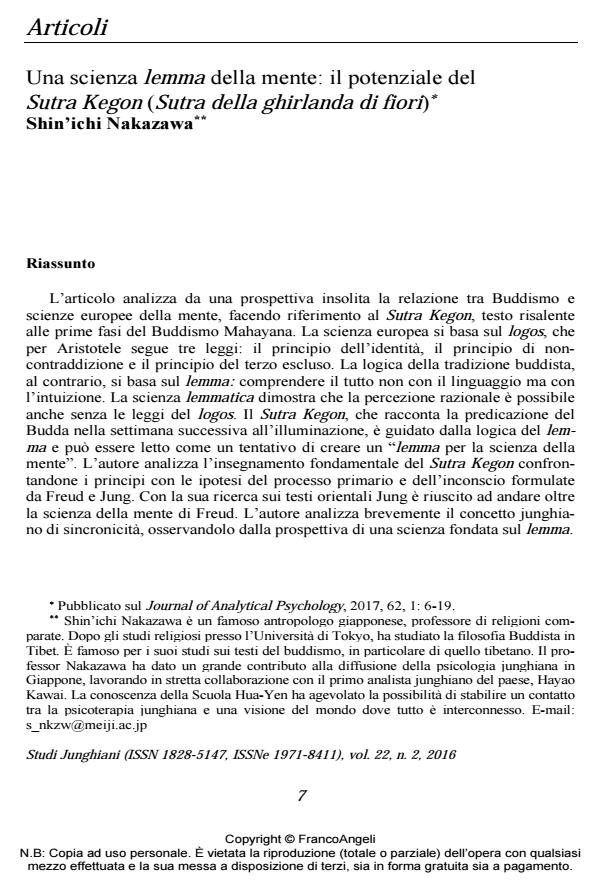A "lemma" science of mind: the potential of the Kegon (Flower Ornament) Sutra
Journal title STUDI JUNGHIANI
Author/s Shin’ichi Nakazawa
Publishing Year 2017 Issue 2016/44
Language Italian Pages 13 P. 7-19 File size 232 KB
DOI 10.3280/JUN2016-044002
DOI is like a bar code for intellectual property: to have more infomation
click here
Below, you can see the article first page
If you want to buy this article in PDF format, you can do it, following the instructions to buy download credits

FrancoAngeli is member of Publishers International Linking Association, Inc (PILA), a not-for-profit association which run the CrossRef service enabling links to and from online scholarly content.
The paper argues for a new perspective on the relationship between Buddhism and European psychology, or sciences of the mind, based in the Kegon Sutra, a text that emerged in the early stages of Mahayana Buddhism (3rd - 5th century CE). The basis of European science is logos intellection, formalized by Aristotle as following three laws: the law of identity, the law of contradiction and the law of the excluded middle. Logic in the Buddhist tradition, by contrast, is based in lemma (meaning to understand as a whole not with language, but with intuition). Lemma-based science born in the Buddhist tradition shows that rational perception is possible even without the three laws of logos. The Kegon Sutra, which explains what Buddha preached only a week after he attained enlightenment, is unified under the logic of lemma and can be seen as an effort to create a ‘lemma science of the mind’. The fundamental teaching of the Kegon Sutra is explored, and its principles are compared with primary process thinking and the unconscious as outlined by Freud and Jung. Jung’s research of Eastern texts led him to create a science of the mind that went further than Freud: his concept of synchronicity is given by way of example and can be seen anew within the idea of a lemma-based science.
Keywords: Kegon Sutra, Buddhism, science of mind, lemma, logos, synchronicity.
Shin’ichi Nakazawa, Una scienza lemma della mente: il potenziale del Sutra Kegon (Sutra della ghirlanda di fiori) in "STUDI JUNGHIANI" 44/2016, pp 7-19, DOI: 10.3280/JUN2016-044002